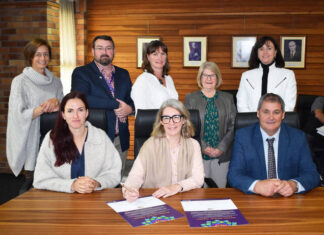The halfway point of the public consultation on the Murray–Darling Basin Plan is a good point to reflect on the reactions that I have been hearing on the draft Basin Plan. The Authority has received numerous comments, suggestions and ideas from the range of public meetings, open house meetings, roundtable discussions and individual conversations that have been held with passionate and committed communities up and down the Basin.
As a relatively new member of the Authority, I have been privileged to be a part of those conversations with the community. The breadth and depth of the knowledge and wisdom that exists in communities has been reconfirmed to me, and has been very useful and constructive to the Authority in the development of the Plan. It has also been a great opportunity for the Authority to provide greater detail on what is proposed in the draft Plan. Since it is a piece of draft legislation, we want to make sure that everyone understands it.
Two significant issues that we’ve heard from communities are about environmental water: how it will be recovered and how it will be used.
How environmental water is recovered is critical to minimising social and economic impacts. It is for this reason that the Authority has been so vocal in supporting a bias towards water recovery through irrigation efficiency projects, over buying water entitlements. The Authority also sees opportunities for water savings through making changes to current river operation rules and investing in infrastructure to deliver water to the environment more efficiently. Changing river operations requires all communities and governments to work together – a big challenge when considering our past 100 years of history. However, if these investments and changes are made, they will be reflected in the Basin Plan and could reduce the amount of water that needs to be recovered for the environment.
While water recovery is important for managing social and economic impacts, how environmental water is used is critical to maximising environmental outcomes. For this reason, the Authority has developed an environmental watering plan to guide and prioritise water use. I know there have been criticisms of a perceived lack of detail in the environmental watering plan, but we need to remember that the Basin Plan is a legislative instrument. If we were to legislate how much water is to be delivered, and where and when, it would prevent a flexible and adaptive approach to environmental water use and would deny the opportunity for local input. Localism is something communities have asked for and it is the approach we have taken in the Basin Plan.
What has been particularly pleasing to me is the recognition by all that something needs to be done. There might be differences on how we achieve our goals, but there is general recognition of the need for the Basin Plan. Certainly states and communities remain at the table. In the end, the Basin Plan will not be a decision for the Authority, but rather a decision for the Australian Parliament. So for anyone interested in the future of the Basin’s rivers and the communities that depend upon them, I encourage you to get involved and have your say.
Diana Gibbs
Murray-Darling Basin Authority member





